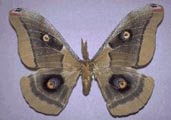Native Plants
Search for native plants by scientific name, common name or family. If you are not sure what you are looking for, try the Combination Search or our Recommended Species lists.
Quercus emoryi
Quercus emoryi Torr.
Emory Oak, Black Oak, Holly Oak, Apache Oak, Desert Live Oak, Western Black Oak, Roble Negro, Bellota
Fagaceae (Beech Family)
Synonym(s):
USDA Symbol: QUEM
USDA Native Status: L48 (N)
Emory oak is a 30-60 ft. oak with a round crown, very roughly furrowed black bark and nearly evergreen leaves. Glossy, leathery leaves, arranged in whorls, resemble holly leaves. They drop gradually in the spring with the new foliage appearing soon thereafter. Red acorns with have a yellow cap. Medium-sized evergreen tree with straight trunk, rough black bark, rounded crown, and shiny yellow-green leaves.
Emory Oak is the most characteristic tree of the oak woodland in mountains along the Mexican border. The acorns (bellotas in Spanish) are only slightly bitter and are gathered and eaten locally. They are also consumed in quantities by quail, wild turkeys, squirrels, and other wildlife. The foliage is browsed by deer and, to a lesser extent, by livestock. This species was named for its discoverer, William Hemsley Emory (1811-87), leader of two southwestern expeditions.
Plant Characteristics
Duration: PerennialHabit: Tree
Leaf Retention: Evergreen , Semi-evergreen
Leaf Arrangement: Alternate
Leaf Complexity: Simple
Leaf Venation: Pinnate
Leaf Margin: Dentate
Leaf Texture: Leathery
Breeding System: Flowers Unisexual , Monoecious
Inflorescence: Catkin
Fruit Type: Nut
Size Notes: Height to 70 ft., width to 75 ft.
Leaf: dark green, stiff and glossy.
Bloom Information
Bloom Color: YellowBloom Time: Mar , Apr , May
Bloom Notes: Yellow catkins.
Distribution
USA: AZ , NM , TXNative Distribution: Mts. of Trans-Pecos, TX to c. AZ & n.w. Mex.
Native Habitat: Dry foothills; moist canyons; 5000 ft.
Growing Conditions
Water Use: Low , MediumLight Requirement: Sun , Part Shade
Soil Moisture: Dry , Moist
Soil pH: Alkaline (pH>7.2) , Acidic (pH<6.8) , Circumneutral (pH 6.8-7.2)
Drought Tolerance: Medium
Cold Tolerant: yes
Heat Tolerant: yes
Soil Description: Grows in a variety of soils derived from varying parent rock. In the wild, often grows in sandy loam or silty-gravelly soil of igneous parentage.
Benefit
Use Ornamental: AttractiveUse Wildlife: Fruit-mammals, Fruit-birds, Nesting site, Substrate-insectivorous birds, Cover, Provides food and cover for deer, javelina, quail, turkey, desert bighorn sheep, birds.
Attracts: Butterflies
Nectar Source: yes
Butterflies and Moths of North America (BAMONA)
|
Oculea silkmoth (Antheraea oculea)  Larval Host |
Find Seed or Plants
View propagation protocol from Native Plants Network.
From the National Organizations Directory
According to the species list provided by Affiliate Organizations, this plant is on display at the following locations:Texas Discovery Gardens - Dallas, TX
Texas Parks and Wildlife Department - Austin, TX
NPSOT - Austin Chapter - Austin, TX
Bibliography
Bibref 766 - Dale Groom's Texas Gardening Guide (2002) Groom, D.Bibref 1186 - Field Guide to Moths of Eastern North America (2005) Covell, C.V., Jr.
Bibref 298 - Field Guide to Texas Trees (1999) Simpson, B.J.
Bibref 1185 - Field Guide to Western Butterflies (Peterson Field Guides) (1999) Opler, P.A. and A.B. Wright
Bibref 355 - Landscaping with Native Plants of Texas and the Southwest (1991) Miller, G. O.
Bibref 318 - Native Texas Plants: Landscaping Region by Region (2002) Wasowski, S. & A. Wasowski
Bibref 291 - Texas Wildscapes: Gardening for Wildlife (1999) Damude, N. & K.C. Bender
Search More Titles in Bibliography
Additional resources
USDA: Find Quercus emoryi in USDA PlantsFNA: Find Quercus emoryi in the Flora of North America (if available)
Google: Search Google for Quercus emoryi
Metadata
Record Modified: 2015-11-06Research By: TWC Staff